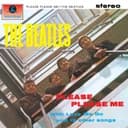The C♭ major scale follows the major scale pattern using seven flats: C♭ to D♭ (whole step), D♭ to E♭ (whole step), E♭ to F♭ (half step), F♭ to G♭ (whole step), G♭ to A♭ (whole step), A♭ to B♭ (whole step), and B♭ to C♭ (half step). This represents the maximum number of flats possible in a major key signature, including the rarely-seen F♭ (sounding like E natural). While theoretically valid and acoustically identical to B major (five sharps), the seven-flat notation makes C♭ major extremely impractical for reading and performing, which is why composers universally prefer the simpler five-sharp spelling of B major in practical musical contexts.
Why B Major is Always Preferred
The choice between C♭ major and B major demonstrates practical considerations in music notation. While both scales sound identical, reading seven flats (including F♭, which sounds like E natural) is significantly more challenging than reading five sharps. Musicians encountering C♭ major must constantly process F♭, an unusual accidental that appears rarely in notation and requires extra mental translation. B major's five-sharp notation uses more familiar accidentals, making it far more practical for composition, sight-reading, and performance. This overwhelming preference for B major illustrates how music notation evolved to prioritize performer efficiency and readability rather than strict theoretical symmetry.
Theoretical Significance and Educational Value
Despite never appearing in practical repertoire, C♭ major serves valuable academic purposes. It completes the theoretical cycle of flat-based major keys and demonstrates enharmonic relationships at their most extreme. Music theory students studying C♭ major gain insight into how key signatures work at their theoretical limits and understand why enharmonic spelling matters. The scale clarifies circle of fifths relationships and illustrates why continuing too far in one direction around the circle creates unsustainable notational complexity. Understanding C♭ major alongside B major deepens comprehension of enharmonic equivalents and the practical principles that guide notational choices.
In practical music-making, C♭ major exists only as a theoretical construct. Any piece that might theoretically be in C♭ major would be written in B major instead. The scale serves to complete our theoretical understanding of Western music's key signature system and demonstrates why composers choose practical notation over theoretical purity. Studying C♯ major reinforces the importance of selecting appropriate enharmonic spellings and helps musicians appreciate how notation serves both theoretical completeness and practical musical communication.





